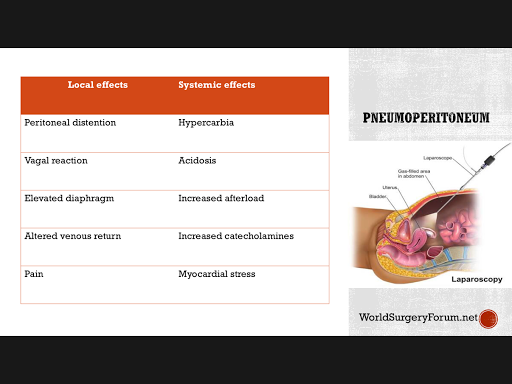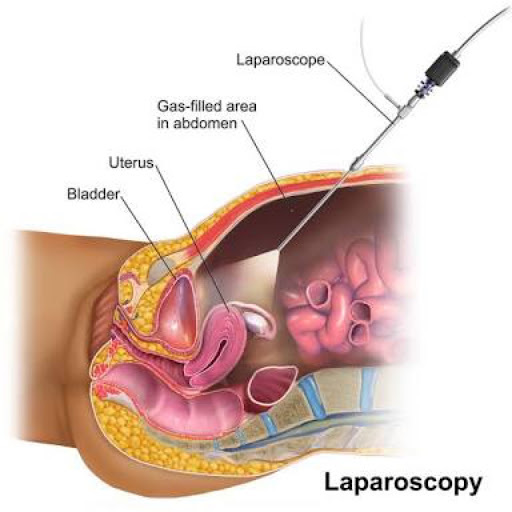What are various options for creating pneumoperitoneum?
CO2, N2O, Air, Helium, Neon and Argon
What is the problem with using Air for insufflation?
The problem with using air insufflation is that nitrogen is poorly soluble in blood and is slowly absorbed across the peritoneal surfaces. Air pneumoperitoneum was believed to be more painful than nitrous oxide (N2O) pneumoperitoneum. However it is less painful than carbon dioxide (CO2) pneumoperitoneum.
What are the advantages of using N2O as an insufflating agent?
N2O has the advantage of being physiologically inert and rapidly absorbed. It also provided better analgesia for laparoscopy performed under local anesthesia when compared with CO2 or air.
Despite initial concerns that Nwould not suppress combustion, controlled clinical trials have established its safety within the peritoneal cavity.
N2O has been shown to reduce the intraoperative end-tidal CO2 and minute ventilation required to maintain homeostasis when compared to CO2 pneumoperitoneum.
What are issues with using inert gases for insuffluation?
Alternative gases that have been suggested for laparoscopy include the inert gases helium, neon, and argon. These gases are appealing because they cause no metabolic effects, but are poorly soluble in blood (unlike CO2 and N2O) and are prone to create gas emboli if the gas has direct access to the venous system
What are various local and systemic effects of Carbon dioxide gas insufflated into the peritoneal cavity ?

What is most common arrythmia caused due to pneumoperitoneum?
The most common arrhythmia created by laparoscopy is bradycardia. A rapid stretch of the peritoneal membrane often causes a vagovagal response with bradycardia and, occasionally, hypotension. The appropriate management of this event is desuflation of the abdomen, administration of vagolytic agents (e.g., atropine), and adequate volume replacement
“Serum cortisol levels after laparoscopic operations are often higher than after the equivalent operation performed through an open incision.” Is the statement True/ False?
True, however there is more rapid equilibration of most stress-mediated hormone levels after laparoscopic surgery
What is the maximal pressure range for pneumoperitoneum?
The abdomen is inflated with a pressure-limited insufflator. CO2 gas usually is used, with maximal pressures in the range of 14 to 15 mmHg
